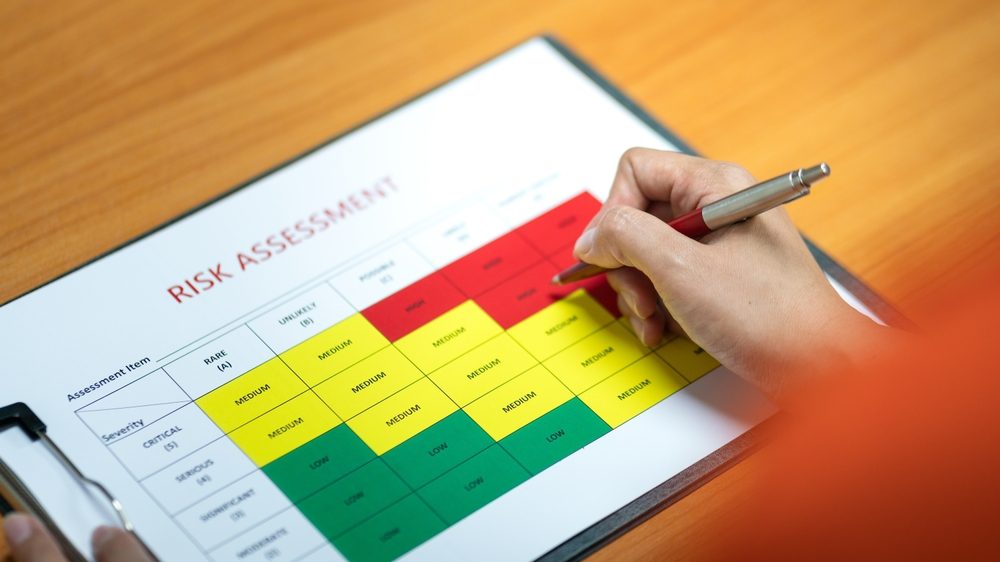A security risk assessment matrix is a crucial tool in a security risk manager’s arsenal; it gives you a snapshot of the entire risk landscape and helps understand the impact of each risk vector.
But, some common mistakes when leveraging the matrix can render the insights derived from the analysis inaccurate and not reflective of the risk profile of the company.
Here are five such mistakes that you should avoid.
Not defining the risk criteria clearly
When using a security risk assessment matrix, defining the risk criteria as specific as possible will help you understand the scope of the assessment and evaluate the severity, likelihood, and impact of each risk vector more accurately.
Using vague or subjective terms, such as “low”, “medium”, or “high”, instead of defining the criteria in numbers or percentages can result in inconsistent or inaccurate ratings, which can make it difficult to compare and prioritise risks.
So, it’s essential to use clear and objective criteria for each level of likelihood and severity. For instance, you can use a scale of 1 to 5, with each number representing a percentage of the likelihood and severity of the impact.
Not collaborating with other team members
Another common mistake that crops very frequently is the lack of collaboration when conducting the risk assessment. Although risk management professionals are experts at their job, not collaborating with relevant team members can lead to focusing only on one or a few types of risks, such as technical, operational, or financial risks, and neglecting other relevant categories, such as strategic, external, or legal risks.
While some risk vectors might have a more significant impact than others, it’s important to consider all risk factors to avoid situations where your organisation is unprepared to face a crisis situation.
This can be overcome by employing a more collaborative approach to the risk identification process by using strategies and tools such as brainstorming, interviews, surveys, and collaborative risk assessment software to cover all bases.
It’s also important to consider the interrelationships and dependencies among different types of risks, and how they may affect each other.
Not updating the security risk assessment matrix regularly
A security risk assessment matrix is not a static document that can be created once and forgotten; it needs to be updated regularly throughout the project lifecycle or at frequent intervals as you see fit because new risks emerge, existing risks change or new information becomes available.
Using a static risk matrix can lead to outdated or inaccurate ratings, and missed opportunities for risk mitigation or exploitation, which can seriously compromise the efficiency, continuity and reputation of your organisation.
So, consider establishing a regular schedule and process for reviewing and updating the risk assessment matrix based on your business environment—keep monitoring your external and internal environment to identify changes that affect the risk profile, and adjust the risk assessment matrix accordingly.
Not leveraging the insights generated for decision making
A risk assessment matrix is not an end in itself, but a means to an end. It is a tool for informing and facilitating decision-making regarding risk management.
But, in some cases, experts may treat it as a mere documentation exercise, and not use it for developing and implementing risk response plans. This can result in wasted time and resources, and ineffective or inefficient risk management.
Leveraging the insights obtained from the risk assessment matrix to prioritise and select the most appropriate risk response strategies for each risk, such as avoiding, reducing, transferring, accepting, or exploiting is the best way to avoid this common mistake.
Not communicating the results to stakeholders
Although it’s easy to view a risk assessment matrix as a tool to be leveraged by SRM experts, it’s also a useful tool to help the stakeholders understand the risk profile of their organisation.
Not communicating the insights from a risk matrix analysis can lead to misunderstanding or misalignment of expectations among stakeholders regarding risk management.
To avoid this mistake, you should communicate the results of the risk assessment matrix to all relevant stakeholders in a timely and transparent manner and explain the rationale behind the ratings and rankings of each risk, and solicit feedback and input from stakeholders on how to improve the risk assessment process and outcomes.
Avoid common mistakes when using a security risk assessment matrix to optimise your SRM process
A risk assessment matrix is a great tool to deploy if you want to understand the risk profile of your organisation and the consequences of potential crisis situations, but you need to be careful to avoid the common mistakes many SRM professionals make when using these evaluation tools.
That way, you can obtain reliable and accurate insights that can inform your decision-making process and enhance your SRM capabilities.





